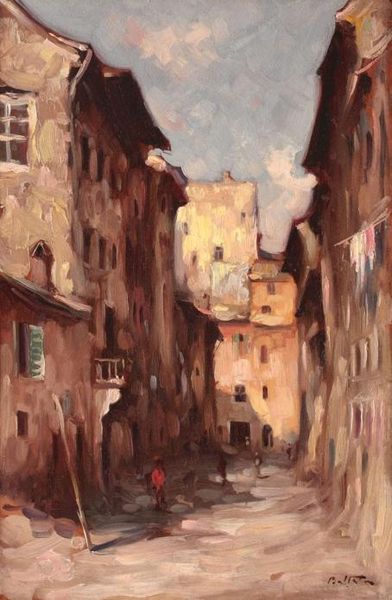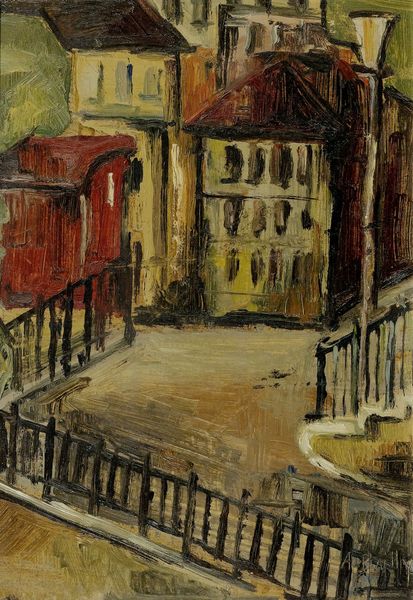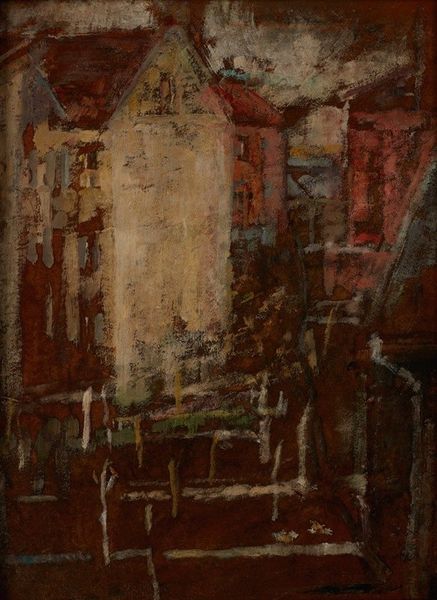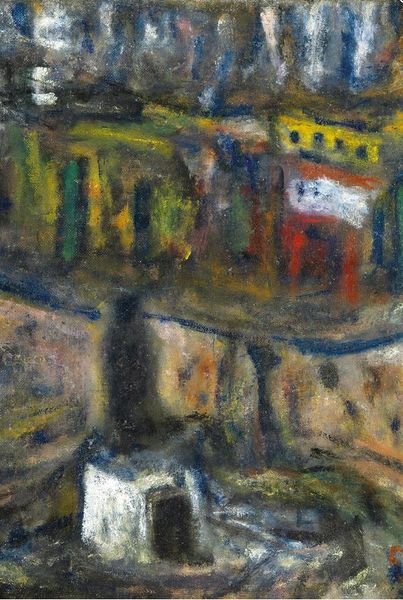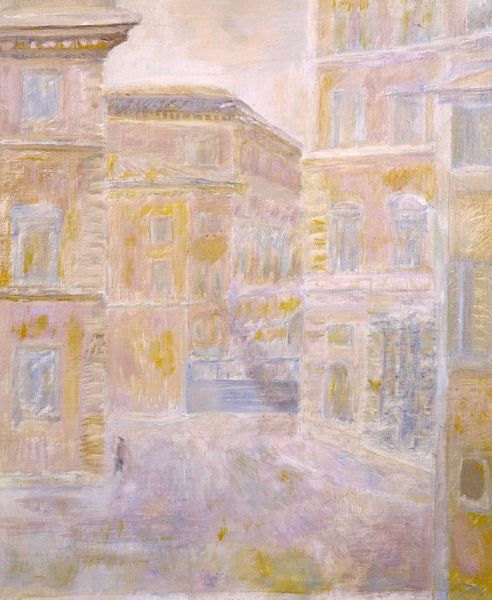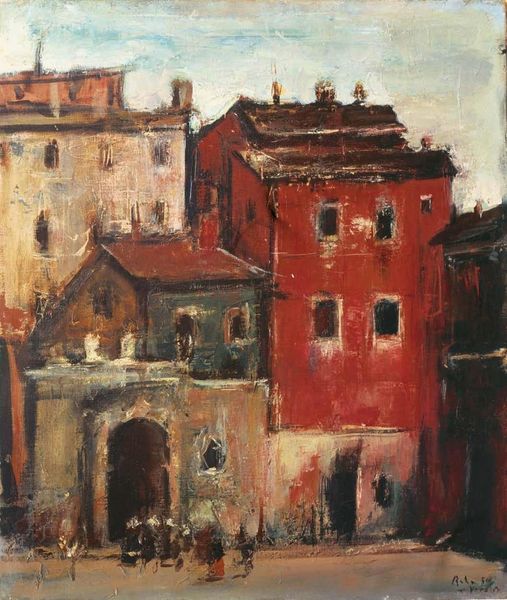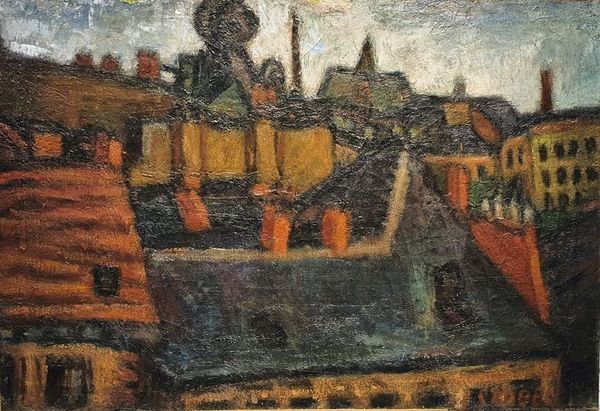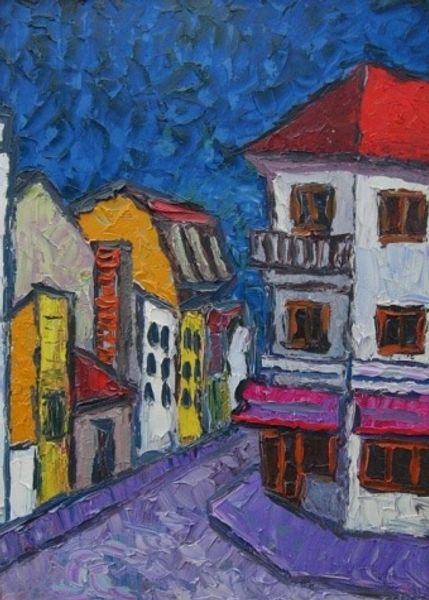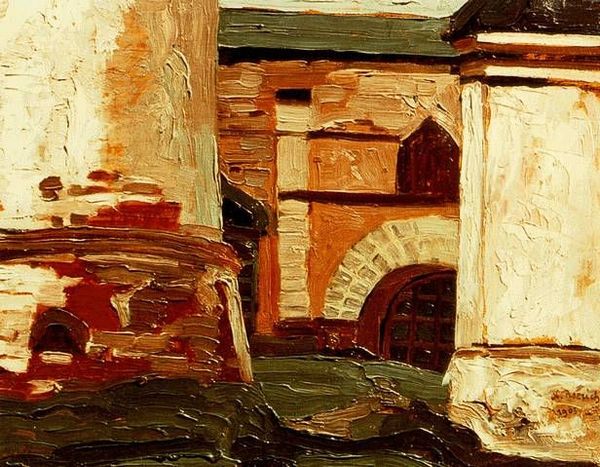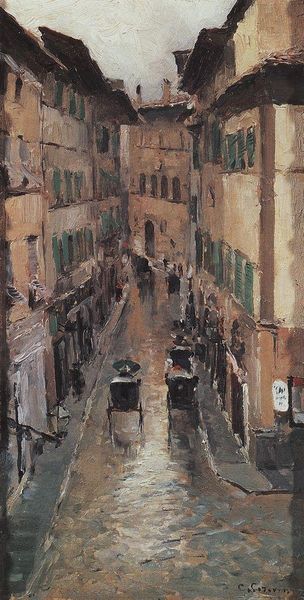
painting, oil-paint, impasto
#
abstract painting
#
rough brush stroke
#
painting
#
oil-paint
#
painted
#
oil painting
#
impasto
#
expressionism
#
cityscape
Copyright: Bela Czobel,Fair Use
Editor: We're looking at "Czobel 1925," an oil painting by Béla Czobel. The impasto is very thick and heavy. The overall impression is… intense, almost claustrophobic. What do you see in this piece? Curator: Immediately, I'm struck by the expressionistic cityscape, rendered with this aggressive impasto. Considering the date, 1925, we're situated in a period grappling with the aftershocks of World War I, a time of profound social and political upheaval. Does this not speak to a feeling of urban anxiety, the city as a site of alienation rather than progress? Editor: That's interesting. I was mostly responding to the dark colors and rough textures. I didn't connect it to a specific historical context like that. Curator: Czobel, like many artists of his generation, was engaging with questions of identity and displacement. The intense brushstrokes could be seen as a reaction against traditional academic painting, a deliberate disruption. How does this confront societal expectations and gender dynamics, especially the restrictive roles imposed on women? Editor: So, the chaos isn’t just a stylistic choice, it’s a statement? Curator: Precisely. It challenges the viewer to confront uncomfortable truths about power, class, and the human condition. Are you persuaded by the theory that it depicts a place in the artist's memory that reminds them of alienation, and possibly war? Editor: Absolutely, it adds a whole new dimension to my understanding of the artwork! I wouldn’t have picked up on all those layers by myself. Curator: And hopefully it encourages one to reconsider the role that intersectional analysis plays in the appreciation of art. Thanks for walking through it with me.
Comments
No comments
Be the first to comment and join the conversation on the ultimate creative platform.
